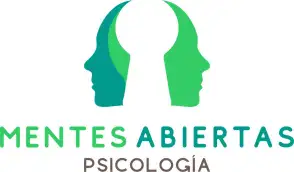Cannabis use among individuals with a history of trauma has generated growing interest in the scientific and medical communities. While some studies suggest that cannabis can alleviate symptoms of trauma-related disorders, such as post-traumatic stress disorder (PTSD), others warn of its potential to exacerbate symptoms in the long term and increase dependence. A recent study analyzed cannabis consumption patterns in this population, identifying dynamics between different usage regimens and their health implications.
Cannabis Use in Trauma-Exposed Individuals
Numerous epidemiological studies have shown that people with a history of trauma are more likely to use cannabis compared to those without such a background. This is largely due to the pursuit of relief from trauma-related symptoms such as anxiety, flashbacks, insomnia, and nightmares.
Perceived Benefits of Cannabis
- Reduction of Immediate Symptoms: Studies have shown that cannabis can reduce the intensity of flashbacks and nightmares while alleviating anxiety during triggering situations.
- Improved Sleep Quality: For those with trauma-related insomnia, cannabis has shown significant benefits in improving sleep onset and quality.
- Emotional Regulation: Some users report feeling more relaxed and emotionally stable after cannabis consumption, which may help them manage stress more effectively.
Risks Associated with Cannabis Use
- Long-Term Symptom Worsening: Prolonged use is linked to worsening PTSD symptoms, such as hypervigilance and avoidance.
- Risk of Dependence: Trauma-exposed individuals are at a significantly higher risk of developing cannabis use disorders (CUD).
- Tolerance and Dose Escalation: Frequent use may lead to tolerance, requiring higher doses to achieve the same effect, which can increase anxiety and other adverse effects.
Cannabis Consumption Patterns in This Population
The study identified three main cannabis consumption regimens:
1. As-Needed Use (PRN)
This regimen, where cannabis is used in response to specific symptoms, was the most common (52.1%). While it offers immediate relief, it is associated with higher consumption due to negative reinforcement.
2. Regularly Scheduled Use (RS)
Representing a minority (8.5%), this regimen involves cannabis use at predetermined times. This approach showed a lower frequency of use, potentially reducing dependence risks.
3. Combined Use (PRN+)
This pattern combines both PRN and RS regimens and was utilized by 39.4% of participants. Although it offers greater flexibility, it is also associated with the highest frequency of consumption.
Frequency and Quantity of Consumption
PRN and PRN+ users reported more frequent cannabis use compared to RS users, although the amount consumed per occasion did not differ significantly across regimens. This indicates that as-needed regimens may lead to more consistent use but not necessarily to an increase in the amount consumed per dose.
Clinical Implications and Recommendations
The study’s findings have important implications for clinical practice:
- Education and Medical Supervision: It is crucial to educate patients about the risks of excessive cannabis use and promote safer usage patterns, such as RS regimens.
- Personalized Treatment Plans: Plans should be tailored to the individual needs of each patient, considering their trauma history and current symptoms.
- Further Longitudinal Research: More evidence is needed on the long-term effects of different usage patterns on PTSD symptom evolution.
- Regulation of Cannabis Access: Physicians should carefully evaluate when to prescribe cannabis and regularly monitor its use.
Final Reflections
Cannabis has the potential to alleviate trauma-related symptoms in some individuals but also carries significant risks if not used appropriately. PRN and PRN+ consumption patterns can provide immediate relief but must be managed carefully to minimize dependence and other risks.
This study highlights the importance of a balanced approach that combines the therapeutic benefits of cannabis with strategies to mitigate its risks. By doing so, it is possible to ensure safe and responsible use among vulnerable populations.


